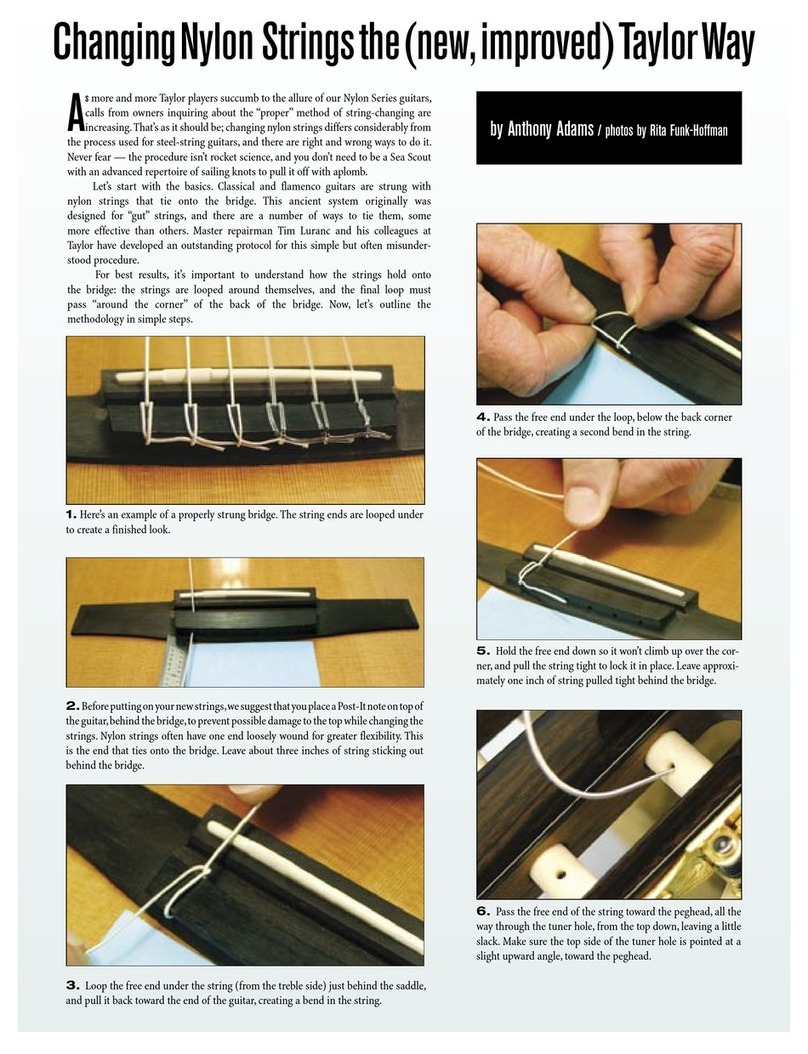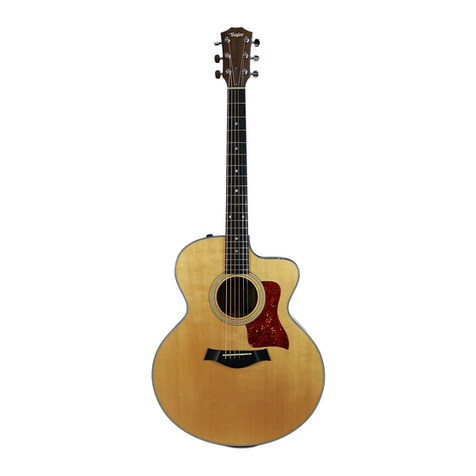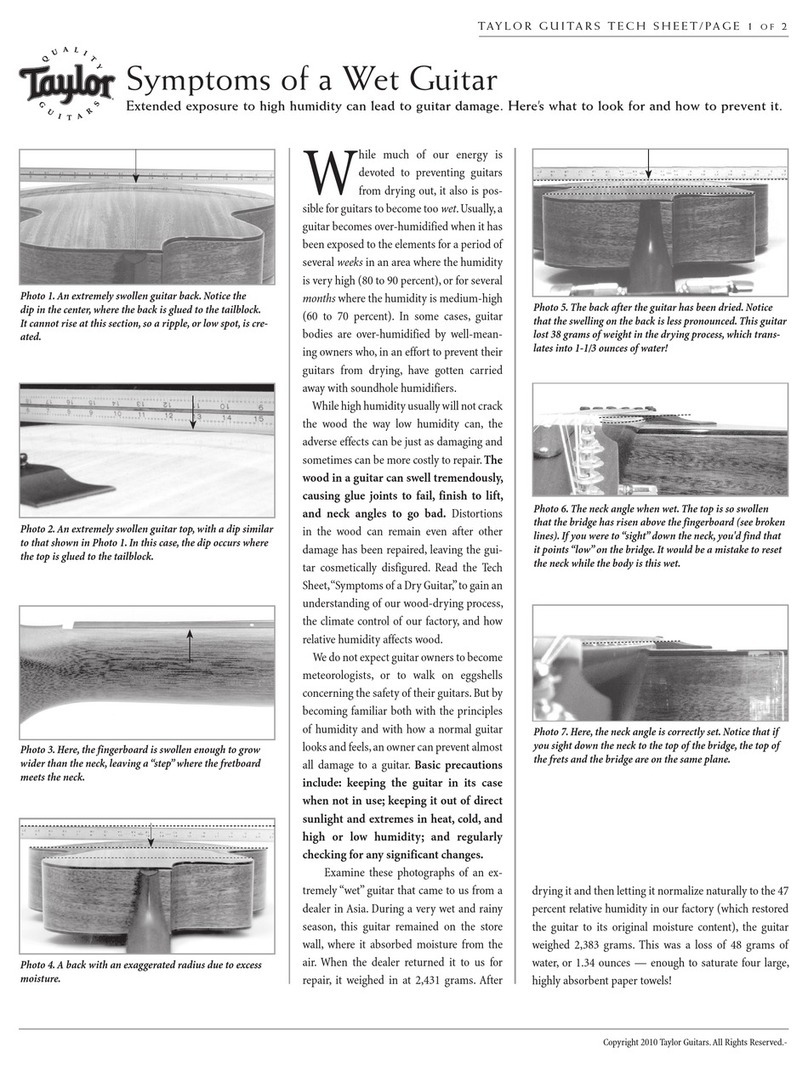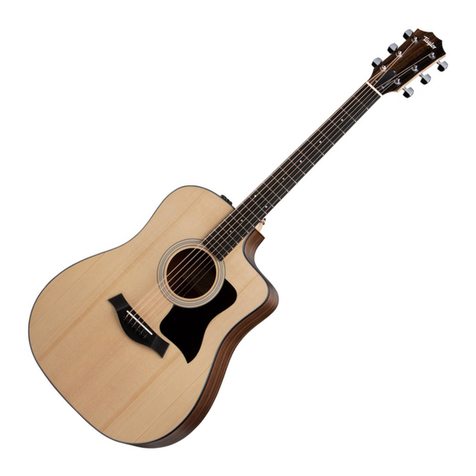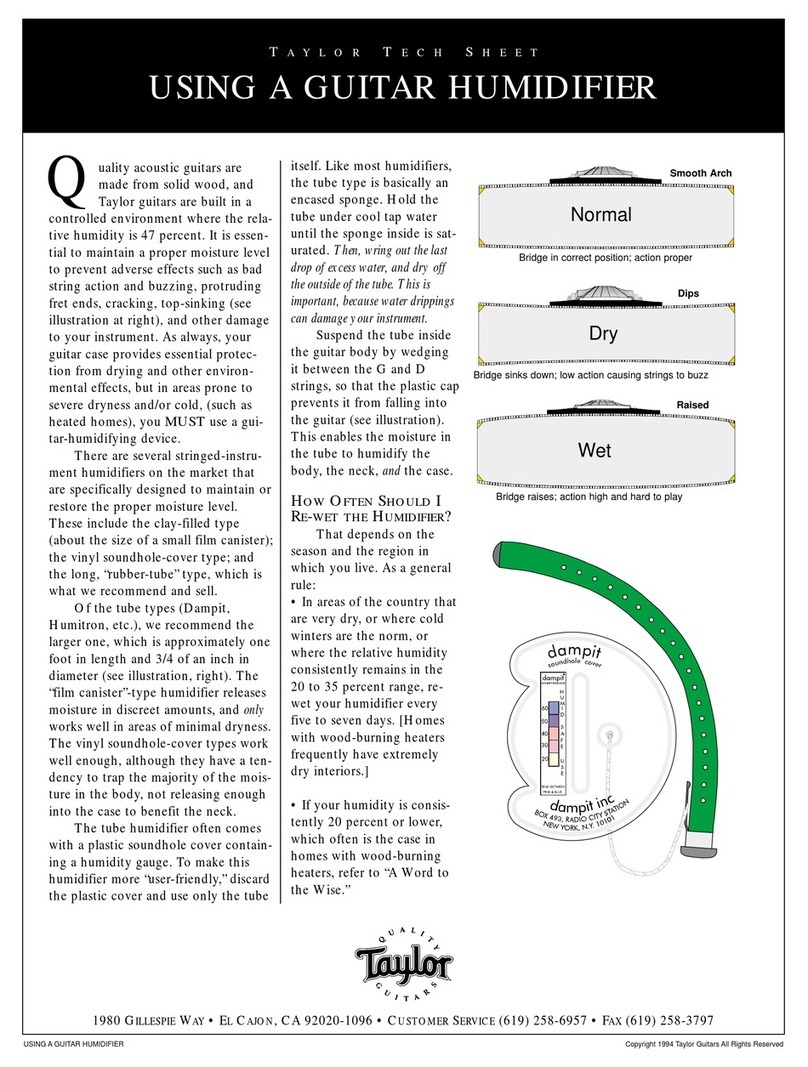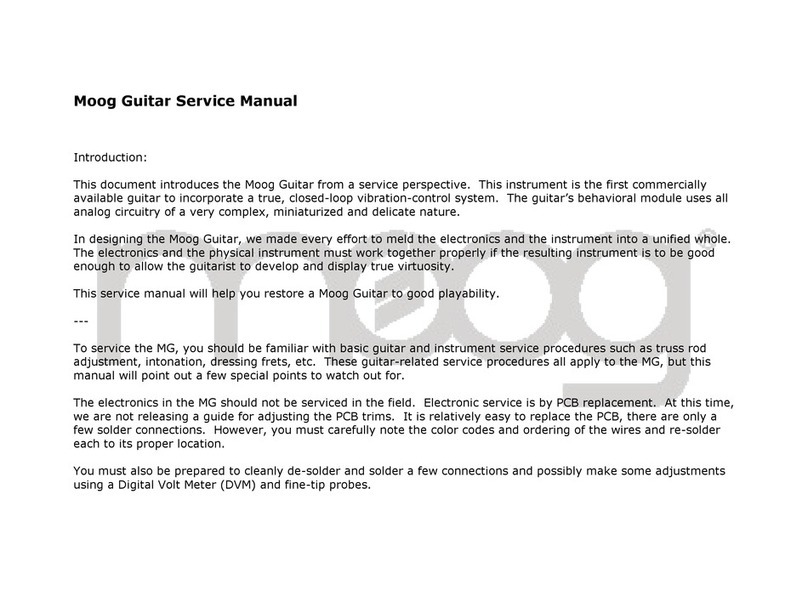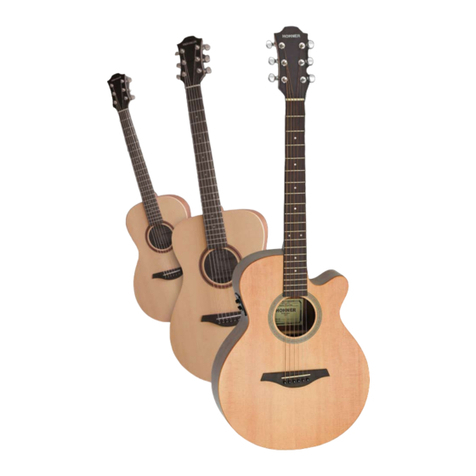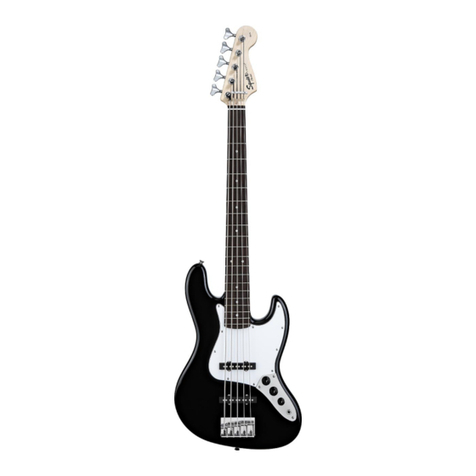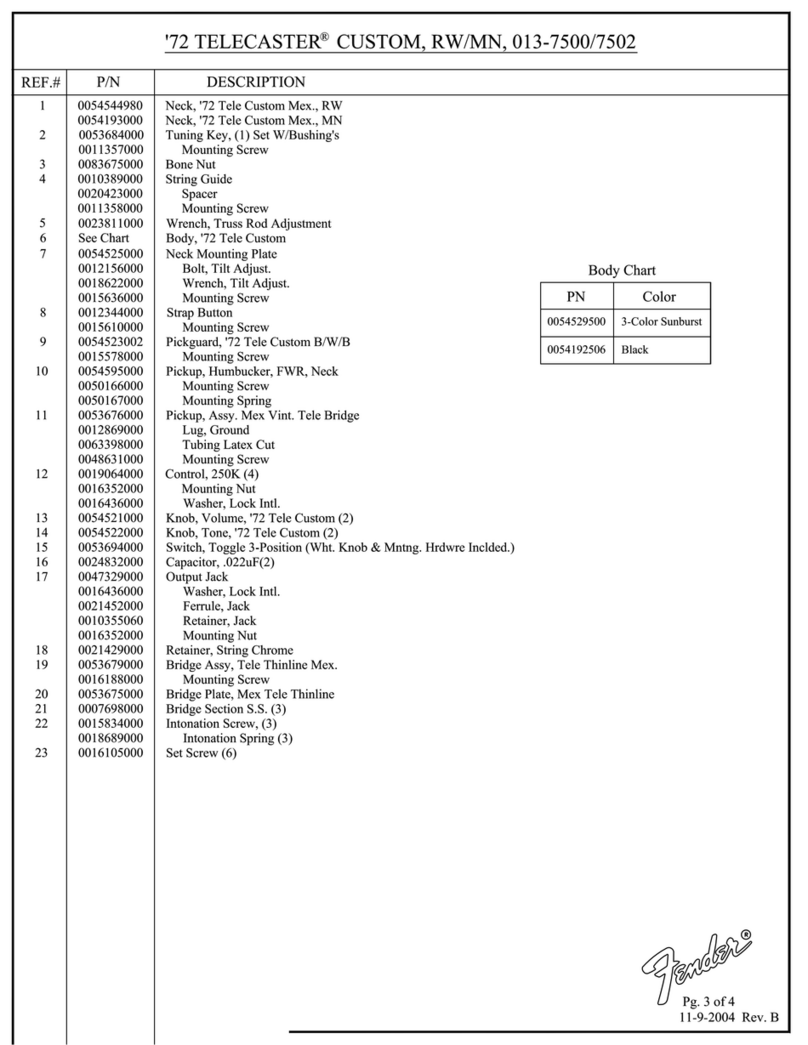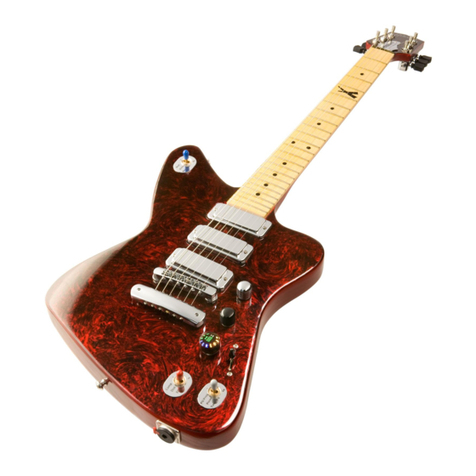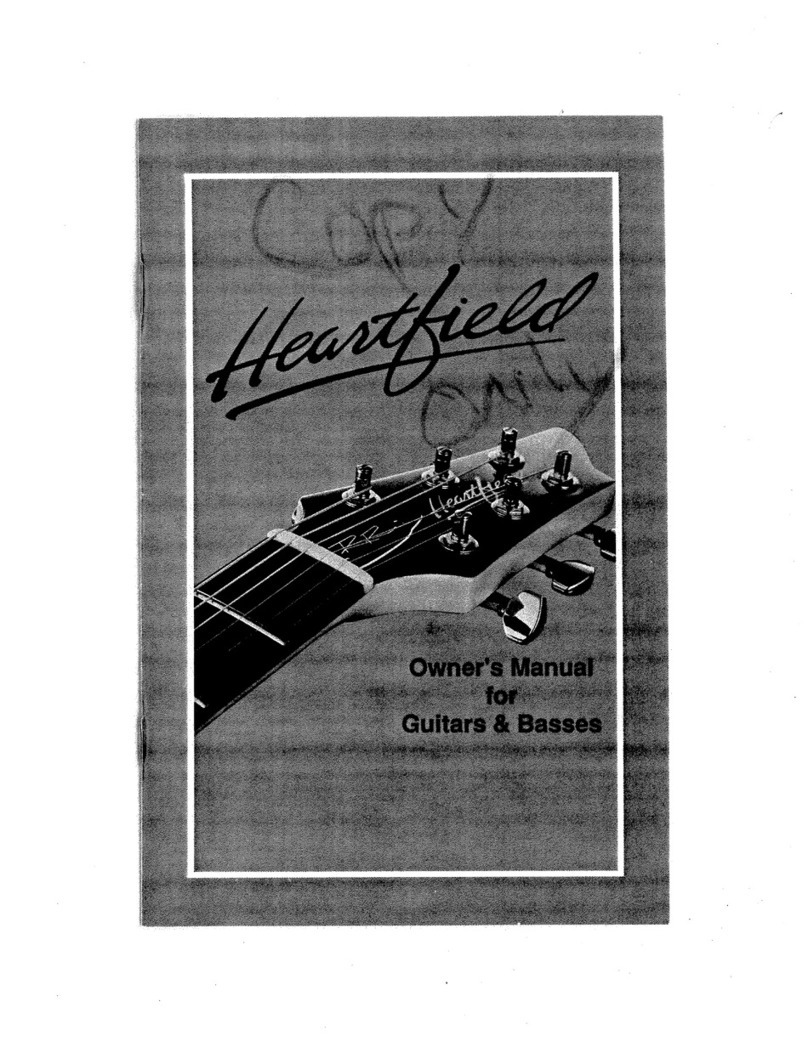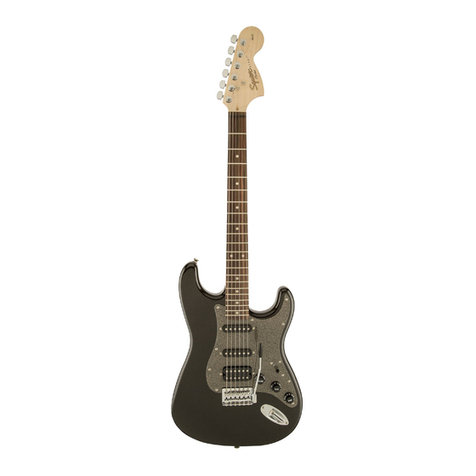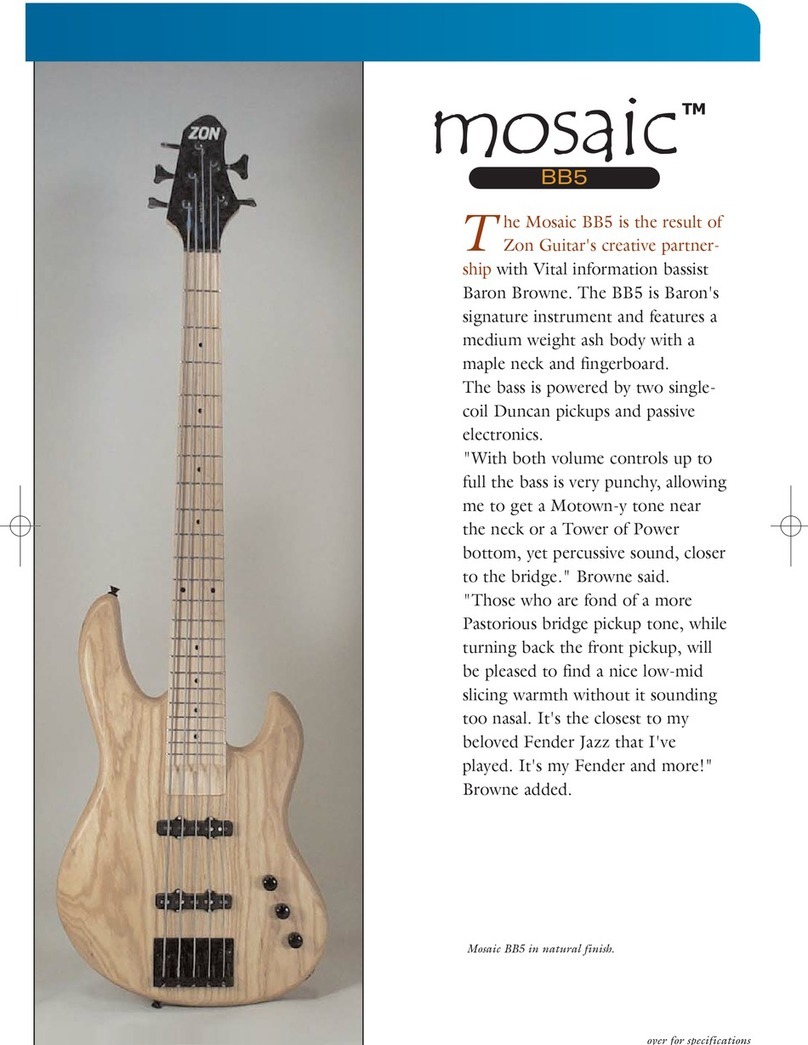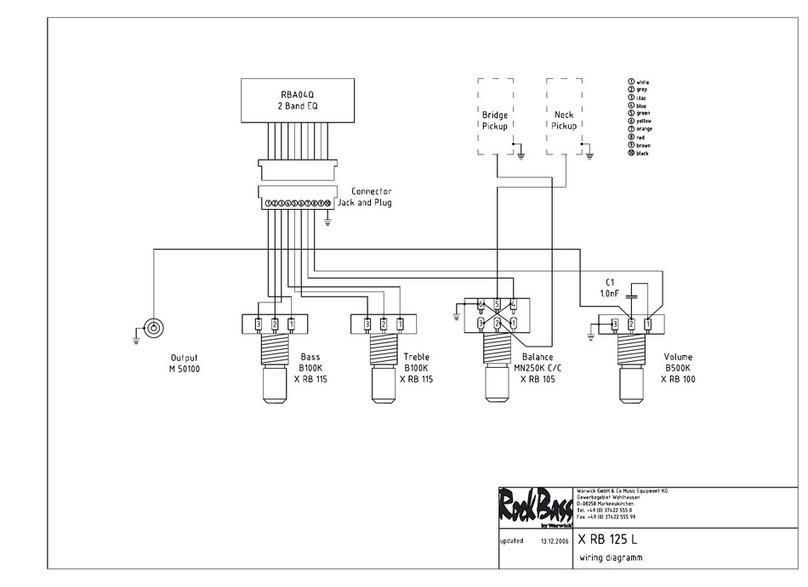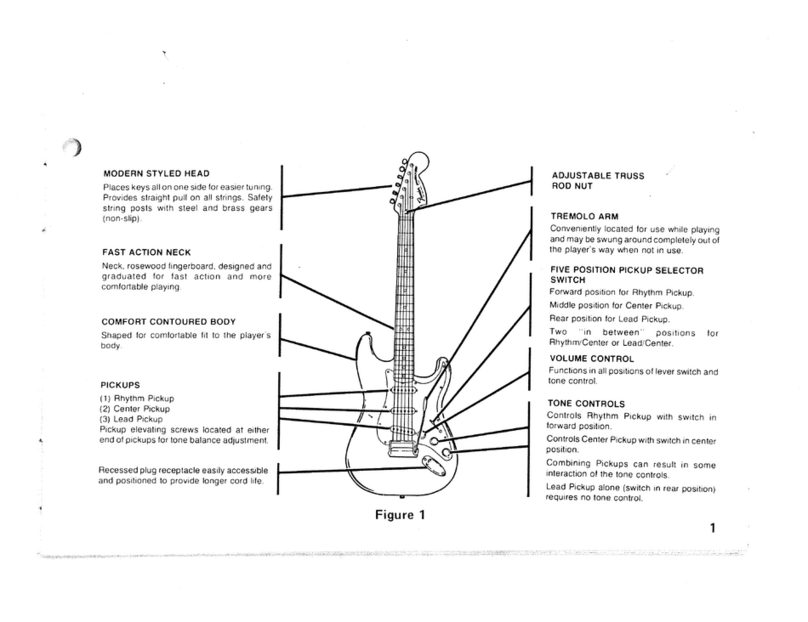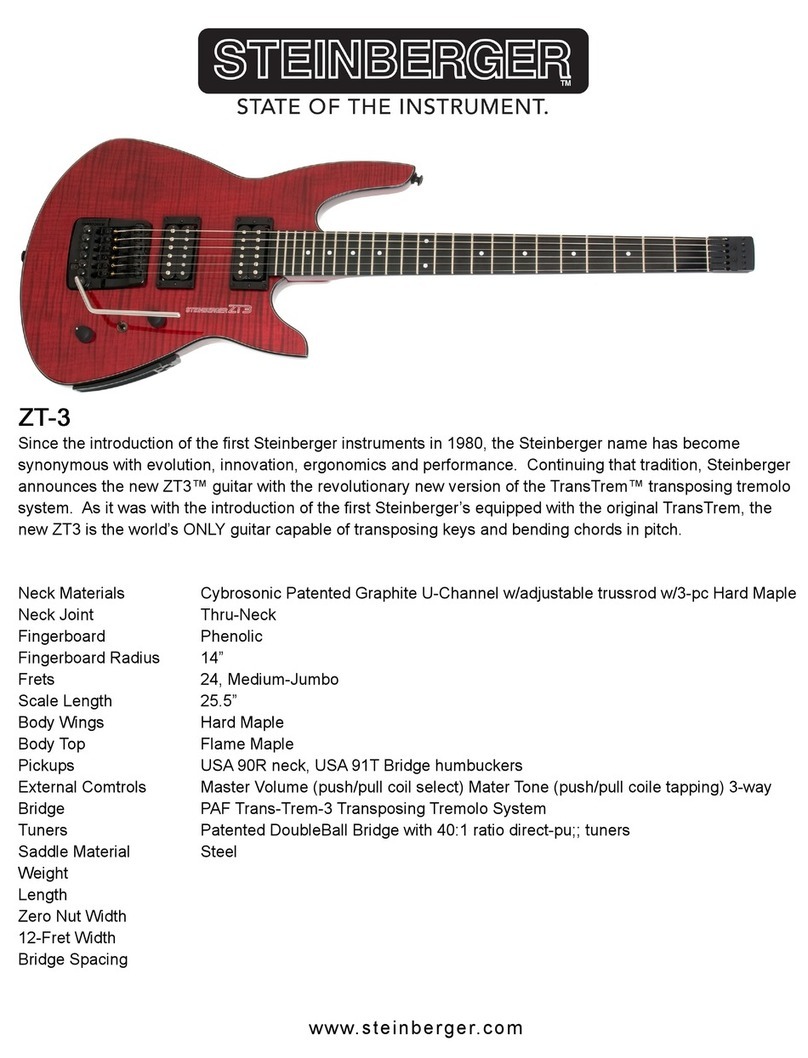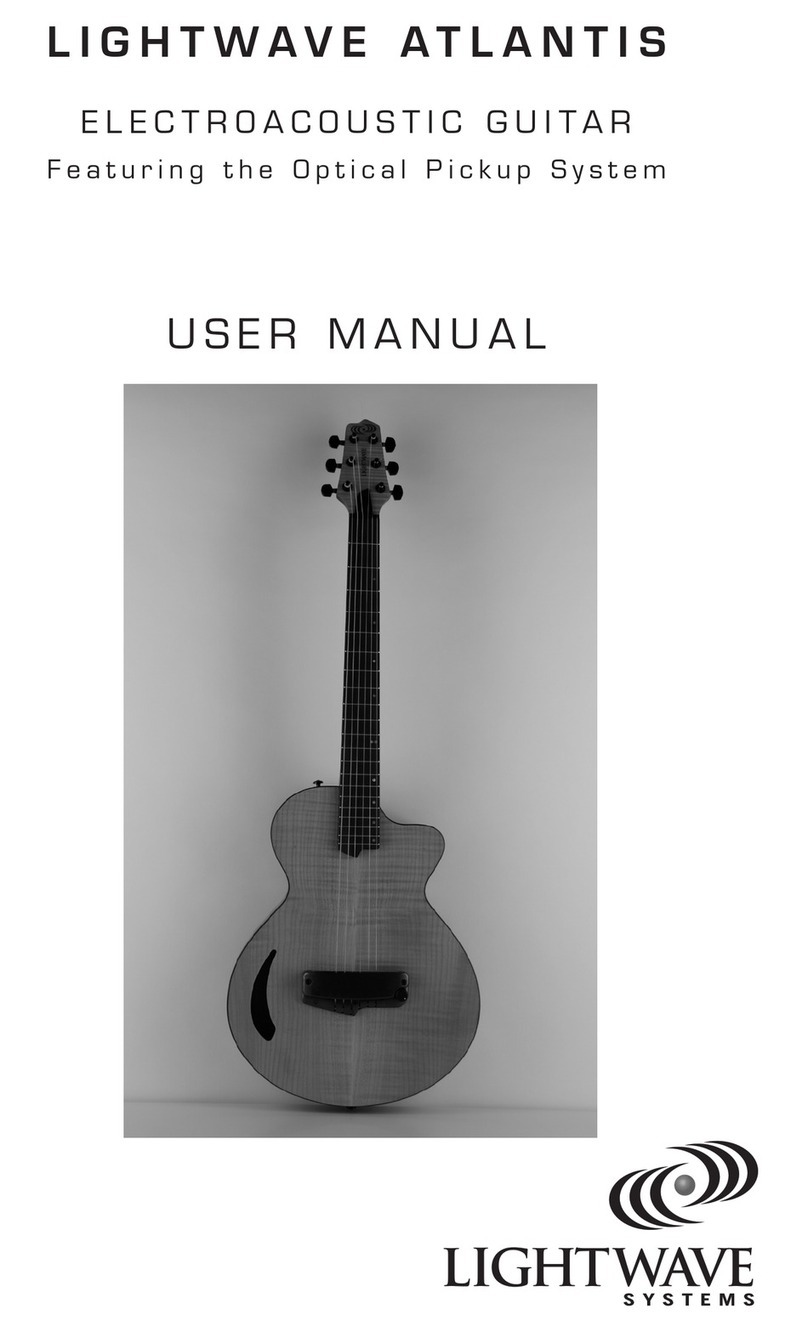
TAYLOR GUITARS TECH SHEET/PAGE 1 O f 2
Using a Guitar Humidifier
Dry conditions can lead to guitar damage. A guitar humidifier will protect your Taylor and keep it playing
and sounding its best.
The Humidipak kit includes three packets and
two pouches. The soundhole pouch houses two
packets and is draped over the strings, allowing
both pouch compartments to descend into the
soundhole to maintain the RH of the guitar body.
The headstock pouch,which holds the third packet,
is placed beneath the headstock in the case to help
maintain the neck and fretboard.
No harmful chemicals are used; it’s just salt and
pure water, and only pure water vapor is allowed in
and out of the packet. The packets are designed
to be tear- and puncture-resistant, and to be
completely resistant to leakage. Depending on
climate conditions, they should last from two to
six months, after which they can simply be
disposed of.It’s time for a new set when the packets
become solid and the contents can’t be moved
around with your fingers.
Other Types of Humidifiers
Of the tube types (Dampit, Humitron, etc.),
we recommend the larger one, which is approxi-
mately one foot in length and 3/4 of an inch in
diameter (see illustration on opposite page).
Another effective option for dry climates is the
Oasis® Humidifier, which features a water-tight
container with a specially designed fabric for water
vapor to pass through. The vinyl soundhole-cover
types work well enough, although they have a
tendency to trap the majority of the moisture in
the body, not releasing enough into the case to
benefit the neck.
The tube humidifier often comes with a
plastic soundhole cover containing a humidity
gauge. To make this humidifier more “user-
Taylor guitars are built in a controlled
environment where the relative humidity is
47 percent. It is essential to maintain a
proper moisture level to prevent adverse effects
of dry conditions, such as bad string action and
buzzing,protruding fret ends,cracking, top-sinking
(see illustration on opposite page), and other dam-
age to your instrument.As always, your guitar case
provides essential protection from drying and
other environmental effects, but in areas prone to
severe dryness and/or cold (such as heated homes),
you MUST use a guitar-humidifying device.
There are several stringed-instrument
humidifiers on the market that are specifically
designed to maintain or restore the proper
moisture level. These include the vinyl soundhole-
cover type; the long, "rubber tube" type; and the
Humidipak,®which we recommend and sell through
TaylorWare® at taylorguitars.com.
The Humidipak
Using patented technology,the Humidipak fea-
tures disposable, moisture-filled packets with a
breathable membrane that provides two-way humid-
ity control, meaning it can either release
or absorb moisture to consistently maintain a
predetermined relative humidity (RH) level of 48
percent.
Copyright 2010 Taylor Guitars.All Rights Reserved.
friendly,” discard the plastic cover and use only
the tube itself. Like most humidifiers, the tube
type is basically an encased sponge. Hold the tube
under cool tap water until the sponge inside is
saturated. Then,wring out the last drop of excess
water and dry off the outside of the tube. This is
important,because water drippings can damage
your instrument.
Suspend the tube inside the guitar body by
wedging it between the G and D strings so that the
plastic cap prevents it from falling into the guitar
(see illustration on opposite page). This enables the
moisture in the tube to humidify the body, the neck,
and the case.
How often should I re-wet the humidifier?
That depends on the season and the region in
which you live.As a general rule:
• In areas of the country that are very dry, or where
cold winters are the norm, or where the relative
humidity consistently remains in the 20 to 35
percent range,re-wet your humidifier every five to
seven days. (Homes with wood-burning heaters
frequently have extremely dry interiors.)
• If your humidity is consistently 20 percent or
lower, we recommend using a second humid-
ifier in your guitar case. Place it in the space at
the top of the case, not in the compartment.
• If your humidity is consistently in the 35 to 45 per-
cent range,re-wet the Dampit every 10 to 14 days.
• Working musicians who routinely perform in dry
regions and winter climates should keep their
soundhole humidifier moist all the time, and use a
second humidifier as previously mentioned.
Instruments that spend a lot of time outside of
their cases and/or under hot stage lights require a
higher-than-normal amount of humidification.
NOTE:
Typically, a tube-style soundhole humidifier
will dry out in two to four days. It is not
necessary to re-wet one other than for the
reasons cited.
Humidipak® by Planet Waves

